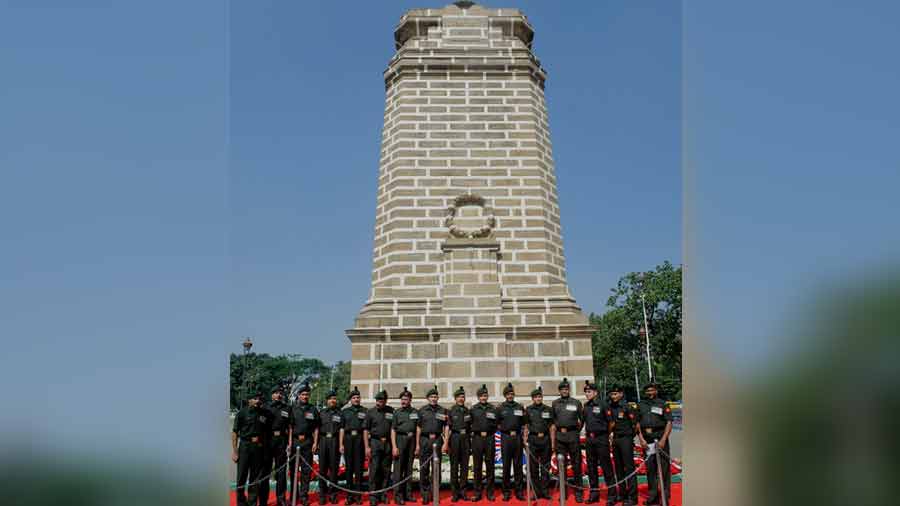It was 11 am on the second Sunday of the 11th month. The buglers sounded their bugles, followed by two minutes of silence. But no one can expect silence at a busy crossing next to Eden Gardens. The cars honked and the local kids playing cricket appealed for a wicket. The so-called silence ended with another sounding of the bugles.
The first sounding is known as Last Post, while the one that breaks the silence is called The Rouse and it was part of the Remembrance Sunday ritual at the foot of the Glorious Dead Cenotaph at Kolkata Maidan.
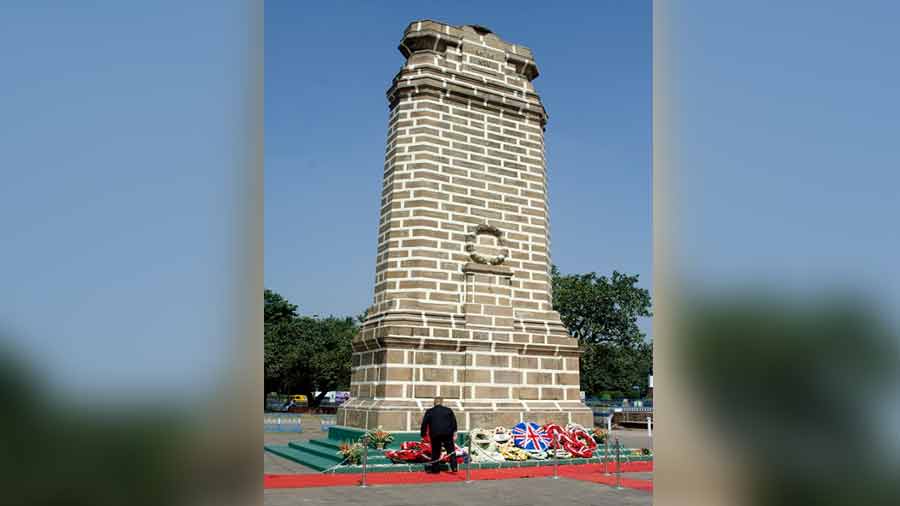
A foreign delegate at the wreath-laying session at the Glorious Dead Cenotaph during Remembrance Sunday
Remembrance Day is observed throughout the Commonwealth to honour the fallen soldiers of World War I and World War II. World War I, which is also known as the Great War, ended at 11am on November 11, 1918. A year later, the day was commemorated by George V. It was subsequently observed by all Commonwealth nations and came to be known as Armistice Day. Post World War II, most Commonwealth nations, including Great Britain, moved the Armistice Day events to the Sunday nearest to November 11, or the second Sunday of November. Later, November 11 came to be known as Remembrance Day, and the second Sunday of November as Remembrance Sunday.
Today, Remembrance Sunday is observed throughout the Commonwealth. Kolkata, once the second city of the mighty British Empire, also observes the day with multiple events spread throughout the day in different locations.
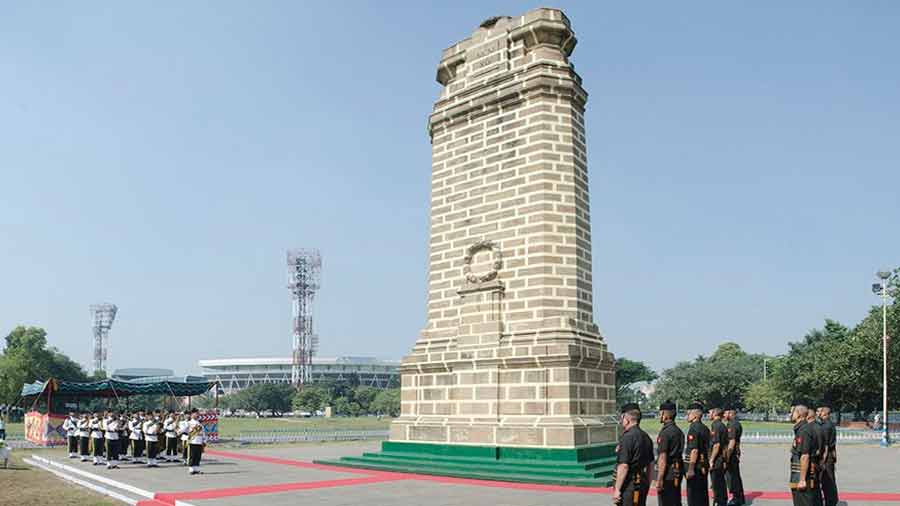
The Army Band at the Glorious Dead Cenotaph. The event at the Cenotaph is organised by the British High Commission, Kolkata
The main event takes place at the Glorious Dead Cenotaph at the Kolkata Maidan. Built in 1924, the Glorious Dead Cenotaph commemorates those Calcutta British and Anglo Indians who gave their lives for King and Country between 1914 and 1918. In the evening, a memorial service is carried out at St. John’s Church, the oldest Anglican church (previously Cathedral), of the city. On some special occasions (like in 2018, which was the centenary of the end of World War I) a service is also carried out at the Commonwealth War Graves Cemetery (CWGC) in Bhowanipore Cemetery.
The event at the Cenotaph, which is a memorial and not a grave, is organised by the British High Commission, Kolkata. It is a short program with an inaugural speech by the British Deputy High Commissioner, Kolkata, as well as speeches by a few other dignitaries. At 11 am, a two-minute silence is observed followed by the wreath laying session.
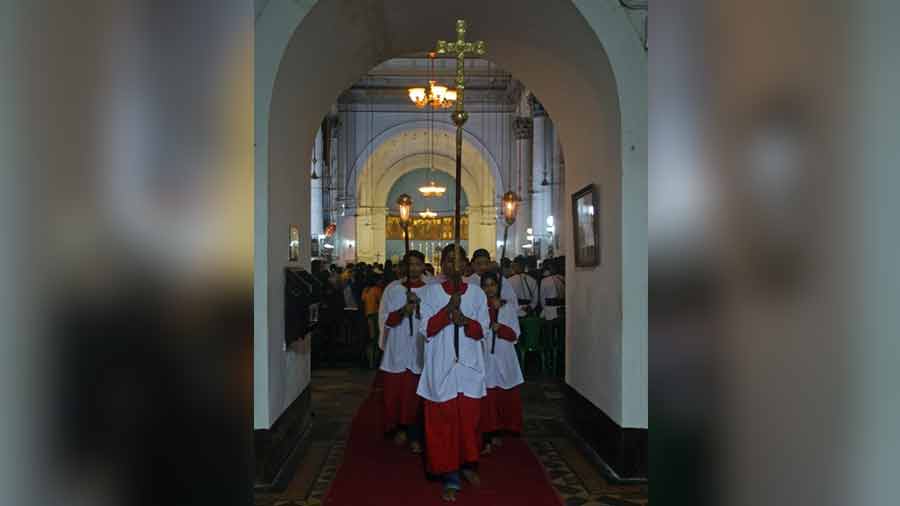
Remembrance Day at St. John’s Church
“The act of remembrance is a defining part of the British identity. Like the Royal Family, the National Health Service, the BBC and, of course, like our Armed Forces to whom Remembrance Sunday is dedicated. It binds the nations of the United Kingdom together, it unites different generations, it connects us with our past and it reminds us who we are. It’s a very special occasion and we are better for it,” said Nick Low, British Deputy High Commissioner to Kolkata.
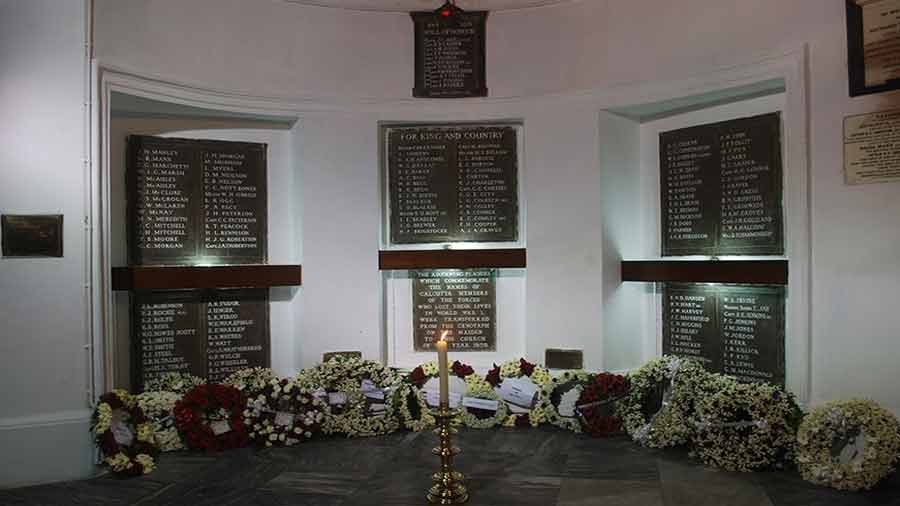
Memorial Corner at St. John’s Church
The evening program at St. John’s Church contains programs by different schools of Churches of North India (CNI) and also has a wreath-laying session at the memorial corner. The memorial corner contains plaques from the Glorious Dead Memorial. Presently, the cenotaph contains no memorial plaques. The brass plaques on the walls of the cenotaph were moved to St. John’s Church in 1959 for security reasons. Today, they occupy the south-west corner of the church, which is known as the memorial corner.
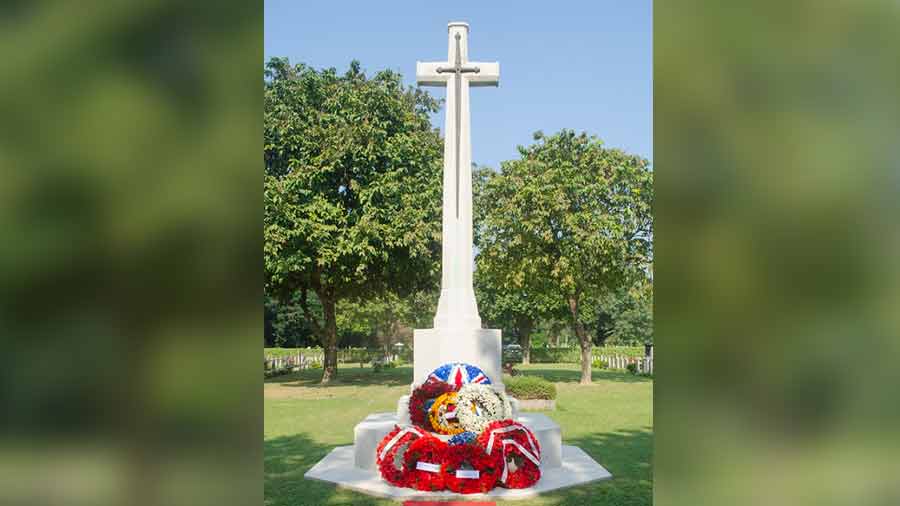
The Cross of Sacrifice at the Commonwealth War Graves Cemetery at Bhowanipore Cemetery
Occasionally, services are held at the Commonwealth War Graves Cemetery (CWGC) in Bhowanipore Cemetery on Remembrance Day. Bhowanipore Cemetery is an active Christian cemetery which houses several graves from both the World Wars. The graves are centred around a huge cross known as the Cross of Sacrifice. In 2018, a brief ceremony was held at the base of the Cross of Sacrifice to remember the fallen soldiers on the centenary of World War I.
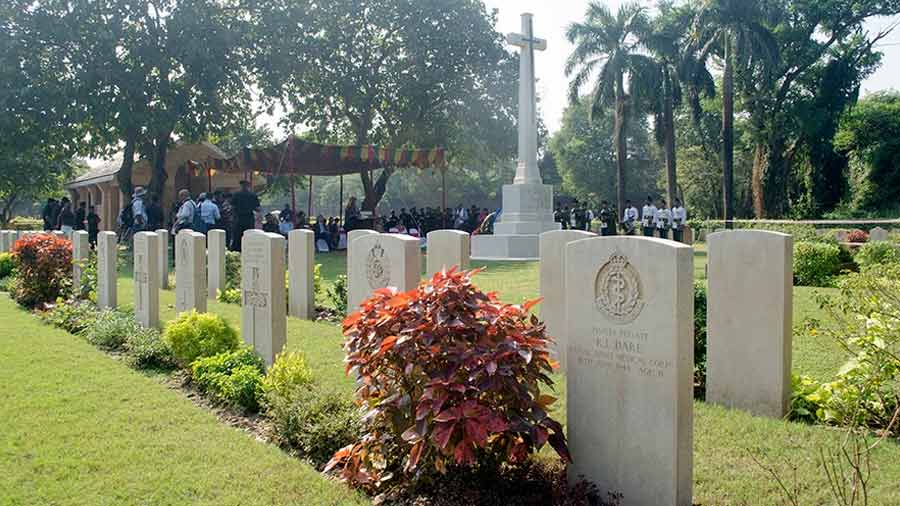
The Commonwealth War Graves Cemetery
Interestingly, red poppy flowers form the base of the remembrance of the fallen men. The red poppies were the first flowers to grow in the churned-up earth of soldiers’ graves in Flanders, a region in Belgium. The red poppy is worn as a badge by all the people attending the Remembrance Day service.
The service held on the second Sunday of November throughout the Commonwealth not only remembers the fallen soldiers but also looks forward for global peace.
There is even a nursery rhyme commemorating the day:
Poppy Poppy what do you say? Wear me on Remembrance Day
Poppy Poppy what do you tell? Many Soldiers in battle fell
Poppy Poppy what should we know? That peace on earth should grow, grow, grow
Note: This year, the Remembrance Sunday event at the Cenotaph in the Maidan will be held at 10:30am on November 14. The St. John’s Church event has been cancelled.
Rangan Datta is a mathematics and management teacher by profession and a travel writer and photographer by passion. He has been addicted to discovering off-beat places since his undergraduate days at St. Xavier's College. Blogging and contributing to Wikipedia are his other passions.
